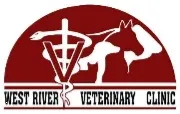For all of our 4-H'ers, rodeo'ers, and show'ers out there, these are some things to consider as the weather is getting very hot outside and our animals are staying active. This article was borrowed from South Dakota State University's Dr. Russ Daly:
Heat Stress, Fairs, and Achievement Days: Animal Considerations
Russ Daly, DVM, Extension Veterinarian
Animals shown at achievement days and fairs may be at increased risk for heat stress compared to their counterparts left at home. Transporting, showing, and handling in hot and humid weather may predispose animals to heat stress and possibly serious health consequences. With the exception of horses, animals shown at fairs and achievement days (cattle, dogs and cats, pigs, poultry, rabbits, sheep and goats) do not perspire and cannot regulate body temperature that way. If conditions are hot and humid, their body temperatures will peak in late afternoon and early evening hours. The most important way to reduce the risk of heat stress is to avoid transporting, handling, and showing during afternoon and early evening hours. This may mean changing checking-in or checking-out and showing schedules to morning hours, when animals’ body temperature are lower.
Species-specific heat stress considerations
Cattle
Signs of heat stress: Panting, open-mouth breathing, excessive salivation, lack of coordination, trembling, high rectal temperature (>104ºF). How to help: Offer shade, fans, plenty of drinking water, sprinklers that provide large droplets. Sprinklers throwing out a mist only contribute to the humidity. Research indicates that cattle under heat stress should be sprinkled with enough water to soak them completely every 5 minutes.
Dogs and cats
Signs of heat stress: Excessive panting (dogs), open-mouth breathing (cats), muscle cramps, deep red mucous membrane color (or becoming pale and dry), weakness, excessive salivation, high rectal temperature (>104ºF). How to help: Offer shade, fans, small frequent amounts of drinking water, run cool water over belly and groin area.
Horses
Signs of heat stress: Profuse sweating, rapid breathing, rapid heart rate, panting, high rectal temperature (>104ºF). How to help: Offer shade, fans, run cool water on legs, offer frequent small amounts of drinking water.
Pigs
Signs of heat stress: Panting, open-mouth breathing, high rectal temperature (>104ºF). How to help: Offer shade, fans, plentiful drinking water, sprinklers that provide large droplets. Do not use sprinklers continuously (cycle 2 minutes on, 2 minutes off).
Poultry
Signs of heat stress: Heavy panting, lifting wings away from body, darkened skin color due to blood being brought to the skin. How to help: Offer shade, fans, cool plentiful drinking water.
Rabbits
Signs of heat stress: Rapid breathing, stretching out on floor. How to help: Offer shade, fans, plentiful drinking water, sprinklers, mist ears with water.
Sheep and goats
Signs of heat stress: Rapid breathing rate, panting, inability to stand, weakness, high rectal temperature (>104ºF). How to help: Offer shade, fans, plentiful drinking water, use rubbing alcohol on wool-less areas in flank and between rear legs. Do not spray sheep with water. If wool becomes wet, air cannot flow properly over the skin for evaporative cooling. For goats, run cool water over the back of the head.
Summary
Any animal exhibiting signs of severe heat stress should be examined and treated by a veterinarian after these “first aid” steps are employed. Exhibitors also need to be careful for themselves when these conditions exist. People should drink plenty of fluids and seek shade in hot, humid weather. Fairs and achievement days are opportunities to showcase animal care and welfare to the public at large. Commonsense measures can ensure animal safety, and maintaining flexibility with schedules is of utmost importance during extreme weather conditions.
South Dakota State University, South Dakota counties, and U.S. Department of Agriculture cooperating. South Dakota State University is an Affirmative Action/Equal Opportunity Employer and offers all benefits, services, education, and employment opportunities without regard for race, color, creed, religion, national origin, ancestry, citizenship, age, gender, sexual orientation, disability, or Vietnam Era veteran status.
